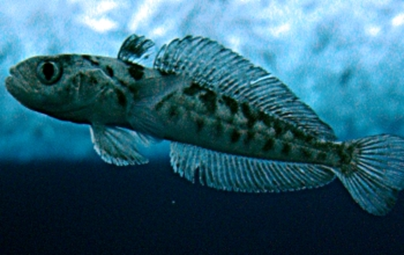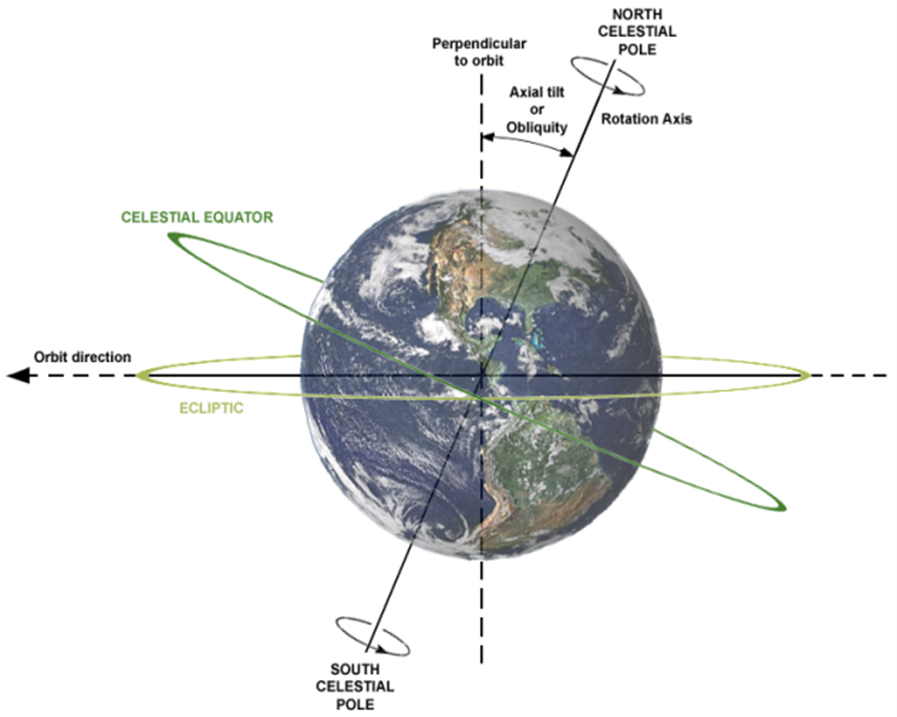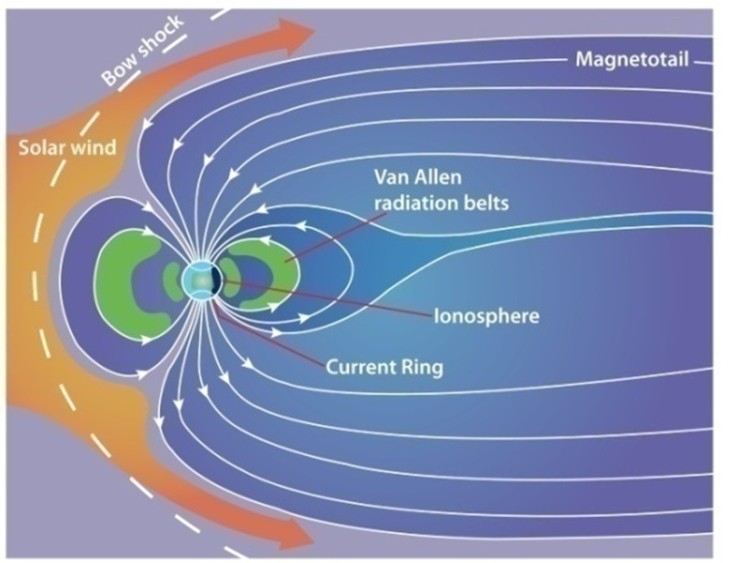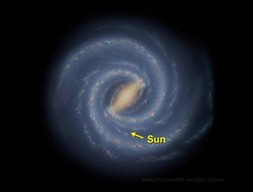The Bible in the book of Genesis chapter one, describes the Earth’s creation and shows that it was purposeful and designed for life. In particular, Genesis 1:28 emphasizes God’s command for humanity to fill the earth and subdue it, indicating the Earth’s intended use as a dwelling place for life.
Isaiah 45:18 states
For this is what the LORD says— he who created the heavens, he is God; he who fashioned and made the earth, he founded it; he did not create it to be empty, but formed it to be inhabited— he says: “I am the LORD, and there is no other.
This being the case, what are the features that our earth has that enable life to exist? But first, let us look at the insignificance of our home in the vastness of the cosmos.
The Pale Blue Dot
When Voyager 1 was speeding out of the solar system beyond Neptune and about 3.7 billion miles (6 billion kilometers) from the Sun, mission control commanded it to look back toward home for a final time. It took a series of 60 images which show our home as a pale blue dot as seen in the image.
Notice the vast emptiness of space. And this is only part of our solar system, which is a very small part of our galaxy called the Milky Way. It is estimated that there are over 100 billion stars in our galaxy and some of them have been shown to have planets. Further, there is estimated to be over 100 billion galaxies. These figures are so great that it is hard for our finite minds to comprehend.
What features does earth possess that enable life to Exist?
Not only did God create life, He designed the earth to support it. The word used to describe the fact that the earth was designed to support human life is ‘anthropocentric’. The sphere on which we live is unique in the whole known cosmos. Some of the many characteristics of the earth that enable it to support human life are as follows:
1. Liquid water
When looking at conditions that allow life to exist, we must consider water. Without water life as we know it, animal, vegetable, and even microbial, could not exist. So, let’s consider it first.
Water has many exceptional life-sustaining properties. One is surface tension. That is, water sticks to itself very strongly, more strongly in fact than any other common liquid. This high surface tension can be demonstrated by very carefully placing a needle onto the surface of a glass of water. The needle will float, but as soon as one drop of a surfactant, such as dishwashing liquid is added, the surface tension will be broken, and the needle will sink immediately.
 When this property is expressed in another form, known as capillary action, it enables plants, including trees, to transport water from their roots up to their leaves. As the water is transported, it carries with it nutrients and this highlights another unique feature of water; its great solvent capacity; greater than any other liquid and is essential for life.
When this property is expressed in another form, known as capillary action, it enables plants, including trees, to transport water from their roots up to their leaves. As the water is transported, it carries with it nutrients and this highlights another unique feature of water; its great solvent capacity; greater than any other liquid and is essential for life.
Another distinctive property of water that enables capillary action to proceed is its very low viscosity.
These properties combine to allow water to carry nutrients through very small tubes called capillaries. This same process of carrying nutrients to extremities operates in all forms of life. In animals and people, the process keeps our extremities flushed with oxygen by nutrient-carrying blood.
Water has the characteristic of being able to absorb a lot of heat. This property is known as heat capacity, and it enables the earth’s vast amount of water to moderate its temperature. By contrast, the moon has no air or water and consequently it has an average maximum daytime temperature of 107℃ and an average minimum night temperature of minus180℃ conditions under which life could not exist.
Not only does water have a great capacity to absorb heat, it also gives off a lot of heat when it evaporates. This is known as the latent heat of vaporization and it enables us to keep our body temperature at 37℃ when we exercise, because the hotter we get the more we perspire, and the more we perspire, the more water evaporates from our bodies and the more we cool.
 Another property is its expansion when cooled. Like all liquids, water contracts and becomes denser as it cools; but amazingly, this process reverses when water reaches 4˚C. On further cooling, water begins to expand and become less dense and lighter, giving rise to the phenomenon that it freezes from the top down, while all other liquids, which become denser as they cool, freeze from the bottom up. It is this property of water that causes bottles to break if they are filled with water and placed in a freezer; it causes icebergs to float, and it is why the sea and even lakes do not freeze completely. This property allows marine life to live. In fact, ice has such good insulating properties that even with the air temperature as low as minus 50˚C, the ice layer can be as little as one meter thick and the water below it will remain liquid.
Another property is its expansion when cooled. Like all liquids, water contracts and becomes denser as it cools; but amazingly, this process reverses when water reaches 4˚C. On further cooling, water begins to expand and become less dense and lighter, giving rise to the phenomenon that it freezes from the top down, while all other liquids, which become denser as they cool, freeze from the bottom up. It is this property of water that causes bottles to break if they are filled with water and placed in a freezer; it causes icebergs to float, and it is why the sea and even lakes do not freeze completely. This property allows marine life to live. In fact, ice has such good insulating properties that even with the air temperature as low as minus 50˚C, the ice layer can be as little as one meter thick and the water below it will remain liquid.
In addition, water is the only liquid that exists on earth in all three forms: solid, liquid and gas.
There is no other liquid like water with respect to its compatibility with life, and our earth has it in abundance, in fact 70% of the earth’s surface is covered by water. No wonder the detection of water is a prerequisite before any further search for life on any heavenly body can proceed.
2. Distance from the sun
Life is only possible because the earth is exactly the right distance from the sun, giving us, in most places, a temperature range mainly between 0ºC and 40ºC. If we were five percent closer to the sun, the oceans would boil; five percent further away and all the oceans would freeze.
3. The earth’s orbit
The earth’s orbit around the sun is nearly a perfect circle. If it were more elliptical, it would be too hot in the summer and too cold in the winter.
4. Speed of rotation
If the earth’s rotation about its axis was slower, the days would be unbearably hot and the nights unbearably cold. If the rotation was faster, the wind would blow so strongly that people would not be able to stand up.
5. Large moon
The earth has a very unusually large moon and its gravitational pull causes ocean tides, which, in turn, cleanse the ocean’s shores and put oxygen back into the water by moving it, thereby enabling it to support aquatic life.
6. The earth’s tilt
 The earth is tilted from the plane of its axis of rotation at an angle of 23.5 degrees. This is important because the greater proportion of land mass is in the northern hemisphere. Land absorbs more of the sun’s heat than the sea, so the earth is much warmer when the northern hemisphere is pointing towards the sun and this happens to be when the earth is farthest from the sun. Additionally, this fact gives rise to the seasons and moderates the seasonal temperatures.
The earth is tilted from the plane of its axis of rotation at an angle of 23.5 degrees. This is important because the greater proportion of land mass is in the northern hemisphere. Land absorbs more of the sun’s heat than the sea, so the earth is much warmer when the northern hemisphere is pointing towards the sun and this happens to be when the earth is farthest from the sun. Additionally, this fact gives rise to the seasons and moderates the seasonal temperatures.
7. The earth’s thin atmosphere
The earth’s unusually thin atmosphere. In fact, the earth’s atmosphere can be compared with the skin on an apple and is compatible with life. For example, our near neighbor, Venus, is smaller and yet it has an atmosphere 80 times that of the earth. As a result, its runaway greenhouse effect has produced searing temperatures.
8. Magnetic core
 The earth has a very large and heavy magnetic core, giving it the highest density of any of the planets in the solar system. Our iron and nickel core produces a large magnetic field which protects us from lethal solar wind. Without such a huge magnetic field, life would not be able to exist.
The earth has a very large and heavy magnetic core, giving it the highest density of any of the planets in the solar system. Our iron and nickel core produces a large magnetic field which protects us from lethal solar wind. Without such a huge magnetic field, life would not be able to exist.
Amazingly New Scientist reports that the earth doesn’t just sit there and take whatever the solar wind gives it. It can actually fight back.[1]
9. Gravity
The earth’s gravity is at just the right strength to enable its inhabitants to be able to move easily. And it is strong enough to keep oxygen and nitrogen in our atmosphere while allowing helium to escape as it is generated as it plays no part in living species. Helium is formed in the Earth’s crust through the radioactive decay of heavy elements like uranium and thorium which are found in rocks.
10. A dampened wobble
As the earth spins on its axis, it has a tendency to wobble, owing to varying pulls from other bodies such as the sun. The unseen force of our unusually large moon’s gravity gently dampens the wobble, preventing rotational instabilities which would have caused dramatic changes in earth’s climatic zones over time, thereby making it inhospitable to life.[2]
11. The planet Jupiter
The huge planet Jupiter, with its strong gravity, is in just the right position to pull many comets and meteors into it, averting them from crashing into the earth and killing much of its life.
12. Right position in our galaxy
 Our solar system is in just the right position in our galaxy (a spiral galaxy called the Milky Way), in what has become known as the Galactic Habitable Zone (GHZ). Too far from the galactic center and all the elements necessary for life would not be present; too close to the center or on one of the galaxy’s spiral arms, and x-ray and gamma radiation from neutron stars would destroy life, and the gravitational pull of nearby stars would affect the motion of the planets in our solar system. Our solar system sits at a comfortable halfway from the galactic center and between two of its spiral arms.[3]
Our solar system is in just the right position in our galaxy (a spiral galaxy called the Milky Way), in what has become known as the Galactic Habitable Zone (GHZ). Too far from the galactic center and all the elements necessary for life would not be present; too close to the center or on one of the galaxy’s spiral arms, and x-ray and gamma radiation from neutron stars would destroy life, and the gravitational pull of nearby stars would affect the motion of the planets in our solar system. Our solar system sits at a comfortable halfway from the galactic center and between two of its spiral arms.[3]
13. Physical constants
The physical constants of the Universe are amazingly finely tuned. The constants of the laws of physics, such as the speed of light; weak nuclear forces; the ratio of neutron mass to proton mass; the gravitational constant and thirty other physical constants are finely tuned to a very precise degree such that if they were altered even slightly, the universe would either be prevented from existing, would not have matter, or would be unsuitable for any form of life.[4]
Summary
The foregoing provides strong support for the biblical statement that God designed the world to support life.
[1] New Scientist, March 15, 2014, page 10.
[2] New Scientist, January 31, 2009, page 31.
[3] P. D. Ward and D. Brownlee, Rare Earth, Copernicus, Springer-Verlag, New York, 2000.
[4] New Scientist, July 23, 2011, page 35.



4 Comments. Leave new
Thanks again Gary, still don’t know why people can believe the lie of evolution.
Thanks Gary… very well presented evidences for our amazing creator God.
Incredible insight! Thank you for sharing about God’s amazing creation.
As always Gary, you always come up with a reason to substantiate the existence of a supreme Creator – God !!